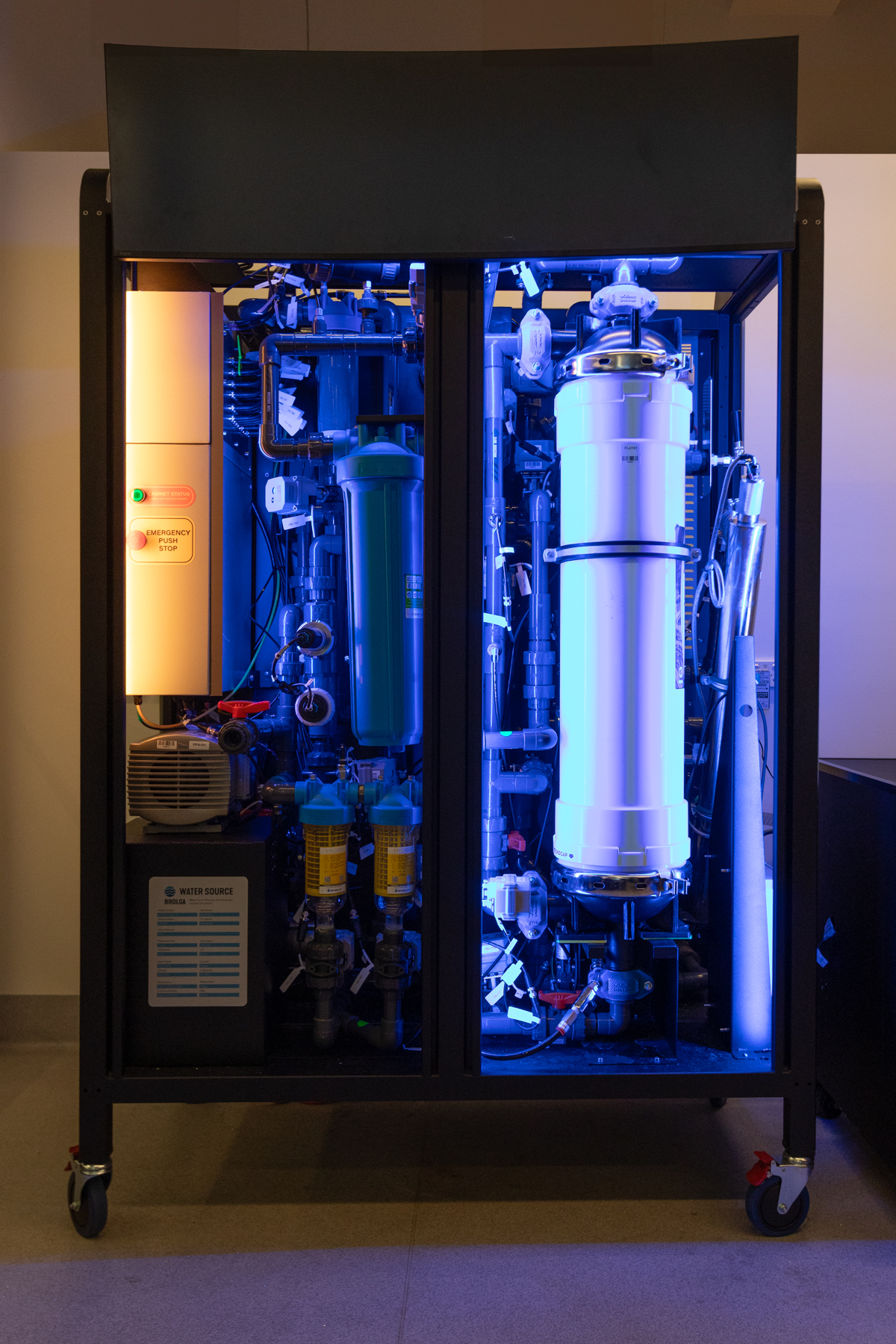
After a decade of development, the Brolga system is ready to launch.
Philanthropist Graeme Wise is adamant that this venture, Water Source Australia, is not a charity.
Sure, its overriding goal is to provide potable water for communities where water quality is a potential issue of survival, and sure, he has used large sums of his own philanthropic funding for more than a decade to get the endeavour to this point, but what he has created is a business. And it’s a business with strong potential to grow, raising more funds for greater good, as Water Source’s products are finally revealed to the world.
This is profit for purpose at its most pure.
Graeme’s journey into tackling the global lack of drinkable freshwater started literally in his own backyard. At his country property, he was frustrated that bath water could not be stored for later use to water the garden, and hired a company to provide a purpose-built filtration and storage system. The company went under but one of the technicians offered to finish the job. Graeme asked if there would be an even bigger, better way of doing what they were attempting? What if they were to aim for ‘potable’ drinking water? And if they achieved that, what if they could do so at scale, across remote communities and across the world.
‘I like tackling problems,’ Graeme said. ‘As it’s developed, Water Source has become a project where its purpose is providing potable water to those who need it, but it also makes a lot of commercial sense to a lot of people, from buyers who need to be able to guarantee clean water, to partners who will help us go to scale.’
After more than a decade of under-the-radar trials, tinkering, invention and pondering, Water Source now has two inter-related products that are about to be unveiled on a broader stage.
The Brolga is a water filtration unit that can provide potable drinking water to communities and customers where water currently requires boiling or other interventions before it can be considered safe.
A 'school project' no more
Early work in the space by Graeme’s team was likened to a ‘school project’ by one water authority, suspicious of the lack of stringent attempts to jump through all the red tape and validation hurdles government water authorities generally demand.
These days, no such mistake could be made. The Brolga features entirely off-the-shelf approved componentry, deliberately meeting every standard authorities require, but where it differs to existing systems is that it can be powered by a solar cell and run independently, monitored, controlled and communicated with through always-on Internet of Things technology that is state of the art and, in fact, revolutionary in the coding framework that powers ELEIoT, as the software is called.
Even as the Brolga system looks to finally move beyond being a prototype to enter the world as a commercial product, ELEIoT has attracted attention from other non-water industries that see the potential in its real-time ability to monitor, drive and evolve to replace the need for human intervention and often impractical site visits.
So far, Brolgas have operated from Scotland to war-torn villages in Timor-Leste, and from country Victoria to remote outback Queensland. Part of the model is to train locals to be able to work with the machines, market and support them, building sustainable businesses and livelihoods, not just providing water. In Timor Leste, this has seen the creation of Bee Lafaek as an independent water provider, as well as local tradespeople trained up to be skilled technicians.
An issue affecting 1.8 billion people
‘Unsafe drinking water is not a Third World problem,’ points out ELEIoT creator Steven Old. ‘Water issues can be found from Flint in Michigan, in the USA, to parts of Tasmania, to towns in Victoria within easy reach of Melbourne.’
UNICEF estimates 1.8 billion people as living without safe drinking water and says 829,000 people are estimated to die from diseases directly attributable to unsafe water, inadequate sanitation and poor hygiene practices. The United Nations estimates 1 in 4 of the Earth’s population lack safe drinking water.
Each year in the United States, waterborne pathogens cause an estimated 7.15 million illnesses, 118,000 hospitalizations, and 6,630 deaths, according to the US Centres for Disease Control and Prevention. In Australia, the driest inhabited continent on Earth, freshwater availability and quality is an endless issue across large parts of the country.
Everything down to virus level
The Brolga cannot yet filter out every dangerous element from water. Some heavy metals, uranium and carcinogens require more intensive reverse osmosis beyond the Brolga’s range, at the system’s size, technical specifications and price point. But it can remove everything down to and including virus level, and is designed to be affordable, as well as small enough to help individuals, businesses or towns.
But the philanthropist in Graeme, who brought the Body Shop to Australia, with its original profit for purpose ethos, as well as The Big Issue magazine, likes the mix of purpose and commercial potential. When he had UK consultants explore the need for such a system, they said the world required at least 160 million Brolga units. That’s going to require technical and manufacturing partners, as well as working with water authorities who are increasingly aware that solving the problem is bigger than their current regulatory demands.
Graeme has made a start and is ready to move Water Source’s business model into a revenue-generating one, to fund further development and investment. It’s time to launch.




